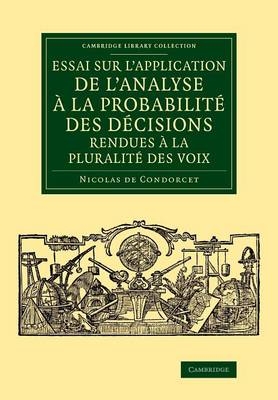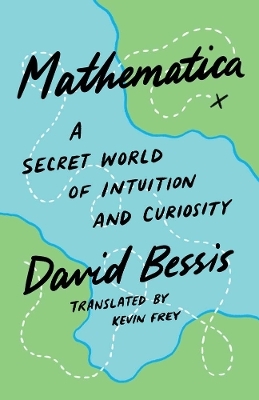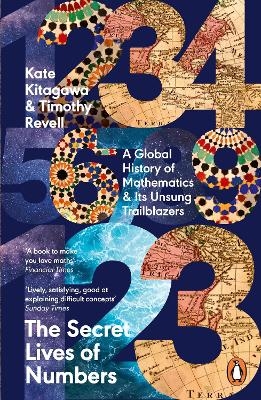
Essai sur l'application de l'analyse à la probabilité des décisions rendues à la pluralité des voix
Seiten
2014
Cambridge University Press (Verlag)
978-1-108-07799-6 (ISBN)
Cambridge University Press (Verlag)
978-1-108-07799-6 (ISBN)
A believer in the development of a rational society through scientific thinking, Nicolas de Condorcet (1743–94) used this 1785 essay to analyse the extent to which mathematical methods can improve the making of majority decisions. He presents several notable results, including Condorcet's paradox, the subject of much twentieth-century work.
A central figure in the early years of the French Revolution, Nicolas de Condorcet (1743–94) was active as a mathematician, philosopher, politician and economist. He argued for the values of the Enlightenment, from religious toleration to the abolition of slavery, believing that society could be improved by the application of rational thought. In this essay, first published in 1785, Condorcet analyses mathematically the process of making majority decisions, and seeks methods to improve the likelihood of their success. The work was largely forgotten in the nineteenth century, while those who did comment on it tended to find the arguments obscure. In the second half of the twentieth century, however, it was rediscovered as a foundational work in the theory of voting and societal preferences. Condorcet presents several significant results, among which Condorcet's paradox (the non-transitivity of majority preferences) is now seen as the direct ancestor of Arrow's paradox.
A central figure in the early years of the French Revolution, Nicolas de Condorcet (1743–94) was active as a mathematician, philosopher, politician and economist. He argued for the values of the Enlightenment, from religious toleration to the abolition of slavery, believing that society could be improved by the application of rational thought. In this essay, first published in 1785, Condorcet analyses mathematically the process of making majority decisions, and seeks methods to improve the likelihood of their success. The work was largely forgotten in the nineteenth century, while those who did comment on it tended to find the arguments obscure. In the second half of the twentieth century, however, it was rediscovered as a foundational work in the theory of voting and societal preferences. Condorcet presents several significant results, among which Condorcet's paradox (the non-transitivity of majority preferences) is now seen as the direct ancestor of Arrow's paradox.
Discours préliminaire; Essai.
| Reihe/Serie | Cambridge Library Collection - Mathematics |
|---|---|
| Verlagsort | Cambridge |
| Sprache | französisch |
| Maße | 170 x 244 mm |
| Gewicht | 800 g |
| Themenwelt | Mathematik / Informatik ► Mathematik ► Geschichte der Mathematik |
| ISBN-10 | 1-108-07799-4 / 1108077994 |
| ISBN-13 | 978-1-108-07799-6 / 9781108077996 |
| Zustand | Neuware |
| Haben Sie eine Frage zum Produkt? |
Mehr entdecken
aus dem Bereich
aus dem Bereich
a secret world of intuition and curiosity
Buch | Hardcover (2024)
Yale University Press (Verlag)
CHF 45,80
a global history of Mathematics & its Unsung Trailblazers
Buch | Softcover (2024)
Penguin Books Ltd (Verlag)
CHF 22,65
Das Jahrhundert, in dem die Mathematik sich neu erfand. 1870-1970
Buch | Hardcover (2022)
Heyne (Verlag)
CHF 30,80


